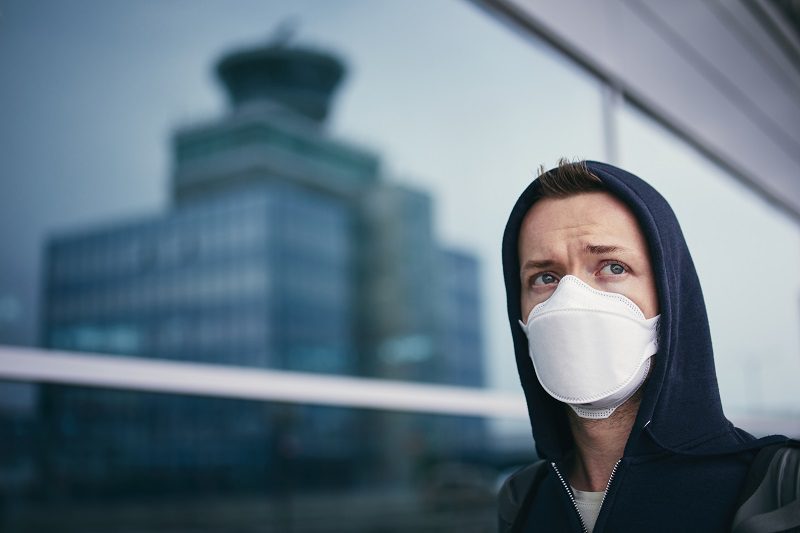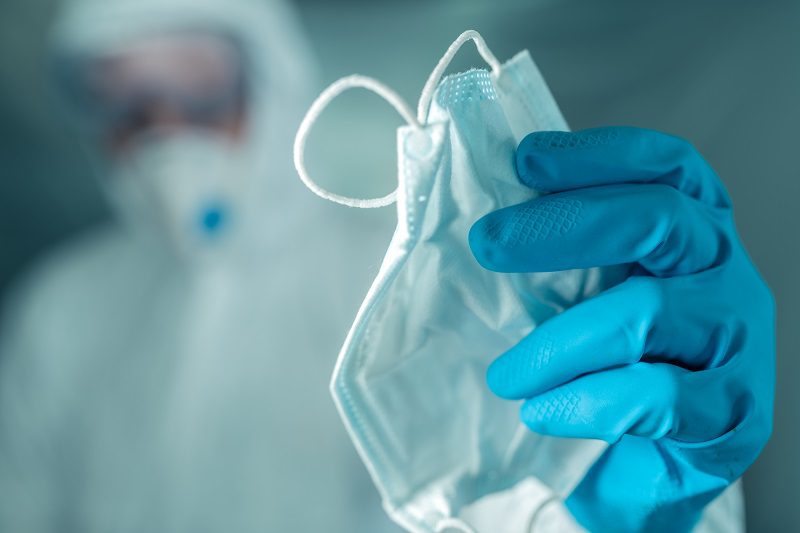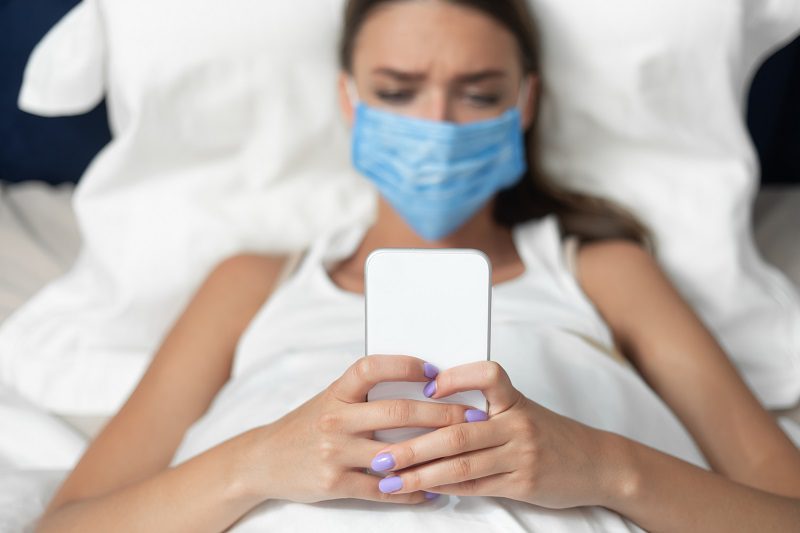
Even though the U.S. Centers for Disease Control and Prevention ( CDC) recommends wearing face masks in public anywhere social distancing measures can not be maintained, only a handful of states have strict and fast rules, so it’s not shocking that there is a lot of uncertainty about when— and whether— you need to wear a mask.
The CDC recommends you wear a mask to prevent the new coronavirus from being transmitted to others even when you’re not feeling sick. That’s because you can have the virus before presenting any symptoms, and you can pass it on to others.
Wear a mask: Shopping for groceries
As you’ll potentially be passing other shoppers in narrow aisles or standing closer than six feet from the cashier as you check out and grab your bags, it’s best to cover up for anyone involved. In fact, you might not be allowed into a store without a mask because a few stores, including Costco and Stew Leonard’s, have rules in place that customers must wear face masks, while several other chains encourage their customers to wear them.
“People should wear face coverings in public to prevent transmission of the virus to other people in the community, not necessarily to protect themselves from contracting the virus,” explains Jill Weatherhead, MD, an assistant professor of adult and pediatric infectious diseases at Baylor College of Medicine in Houston. “Individuals who are asymptomatic or pre-symptomatic can potentially spread the virus unknowingly to others in the community if they’re not wearing a face covering.”
Wear a mask: At the gym or exercising outdoors in populated areas
While the good news is that coronavirus does not appear to be transmitted through sweat, you still have to wear a mask when doing your workout at the gym. (Yes, we know it’s getting really hot and uncomfortable.) Why? The respiratory droplets (that spread coronavirus and other diseases) in your breath will travel further when you get your heart rate up and start breathing heavily and more aggressively, says Sandra Kesh, MD, deputy medical director and infectious disease specialist at Westmed Medical Group in Westchester, New York.
“If an infected person coughs in an enclosed area, like a gym, where the same air is constantly circulating, those particles can spread all throughout the room,” she says.
If you’re jogging, walking, or cycling on a well-trafficked trail or sidewalk during your al fresco sweat session, you should also wear a face mask. Just make sure you can still breathe well enough to get enough oxygen, advises Dr. Weatherhead, otherwise stay indoors or find a safer outdoor recreation area.

Wear a mask: At the salon or spa
As beauty salons and spas in parts of the world begin to reopen, some states, including Connecticut, New York, Virginia, and Wyoming, have made masks compulsory when you’re getting a haircut or mani. So even if your state or your salon doesn’t require it, you should wear a mask if you can’t keep the six-foot-or-more distance, Dr. Weatherhead says.
Wear a mask: At restaurants
You should also wear your mask before and after eating because even when tables are six feet apart, “on the table, as well as with restaurant staff, there is still interaction between friends and family,” says Dr. Weatherhead.
Moreover, Dr. Kesh also explains that the simple act of talking alone can be enough to spread the virus in the right conditions. “Studies have shown that respiratory droplets can come from even just regular talking,” Dr. Kesh says. She points to a study out of China where a diner in a restaurant didn’t know he was infected with COVID-19. “Several people—some even quite far away—contracted the virus,” Dr. Kesh says. “We assume that the spread came as a result of the airflow in the restaurant.”
Wear a mask: Gathering with friends and extended family
Making a bank deposit? Making a grocery delivery to a neighbor? Working at an important project? It doesn’t really matter the reason for being around other humans who don’t live in the same house as you, “I recommend face covering,” Dr. Kesh says.
“Even in areas where there has been a downslope of the infection curve, it’s important to keep up these habits to reduce the risk of exposure.”

Wear a mask: Attending religious services
In one well-publicized event, a 122-member Wisconsin church choir that met to practice for a few hours in March resulted in a whopping 87 percent of the choir becoming ill. This may have been because of the proximity, the frequency of contact, the closeness of contact, or because of the respiratory particles that have spread through singing.
If you decide to attend in-person worship services, remember to keep your distance, and wear a face covering, even if you just say “Amazing Grace.” The virus can be transmitted immediately from person to person — and possibly through the ventilation system, too, according to emerging research.
Don’t wear a mask: Exercising outside in unpopulated areas
As long as you’re going to be all alone, say, on a remote hiking trail or running at a very early hour in the morning, “outside exercise is one scenario where you don’t need to wear a facial covering, as long as you can guarantee you won’t pass others,” Dr. Kesh says.
But what if the path isn’t completely remote, but you’re planning to keep your distance? With the strength of the breath (your and the other person’s) so strong considering you exercise and the wind is potentially at play, your best option is to wear a cloth mask — yes, even if you pass people who are more than six feet away.

Don’t wear a mask: At home by yourself or just with family
Since we’re almost inseparable from the crew we ‘re living with, we ‘re breathing the same air almost 24/7. You don’t need to worry about wearing a mask if you’re at home or in your car with your family members unless someone is infected with the virus. The sick family member should live in isolation as much as possible and wear a face covering when they are around others, according to the CDC ‘s guidance on caring for a sick household member.
Don’t wear a mask: If you have trouble breathing or experience shortness of breath
There are some individuals that should never wear a mask. “Children less than two years old, people who are unable to take off their masks without assistance, and persons with shortness of breath should not wear face coverings,” Dr. Weatherhead says. For everyone else, though, it’s crucial to remember: “One-third to one-half of all people never develop symptoms of coronavirus, but may still be spreading it to others. Everyone is fair game for contracting COVID-19,” Dr. Kesh says.























